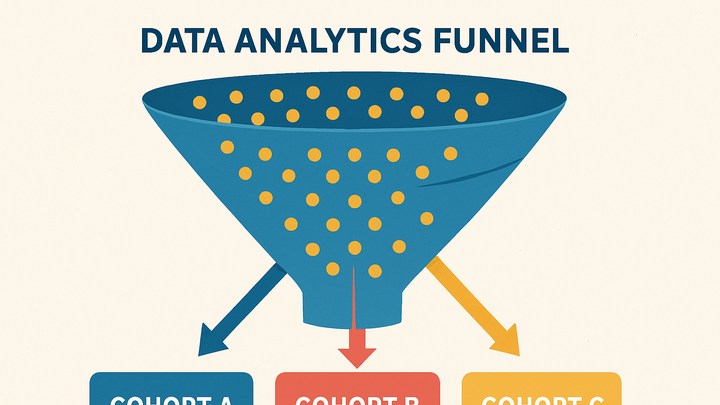Published on 2025-06-26T04:47:07Z
What Is a Sub-segment in Analytics? Examples and Use Cases
Sub-segment in web analytics refers to a further breakdown of a broader segment. A segment groups users or sessions based on shared characteristics—such as traffic source, country, or behavior. A sub-segment applies additional filters on this group to hone in on a more specific cohort, such as mobile visitors from Europe or returning customers who viewed a pricing page. This refined analysis reveals nuanced insights, supports personalized marketing strategies, and uncovers hidden trends that might be obscured in broader reports. Tools like GA4 and PlainSignal enable sub-segmentation through Explorations and custom properties, respectively, offering flexible ways to slice data without inflating quotas or infringing on user privacy.
Sub-segment
A sub-segment is a refined subset of an analytics segment, applying extra filters to isolate specific user cohorts for deeper insights.
Definition and Context
Understanding the core concept of sub-segments and how they relate to broader segments.
-
Segment vs sub-segment
A segment groups users or sessions by one or more criteria (e.g., source=‘organic’). A sub-segment applies additional filters (e.g., device=‘mobile’) on that segment to refine the analysis.
-
Primary use cases
Sub-segments help isolate specific behaviors—like customers who abandoned carts after viewing pricing—in order to tailor marketing, optimize UX, or troubleshoot issues.
Sub-segmentation in GA4
Google Analytics 4 provides an Explorations workspace where you can break down existing segments into sub-segments for side-by-side comparison.
-
Steps to create a sub-segment in GA4 explorations
Follow these steps to refine a segment within an exploration:
-
1. select or create a base segment
In Explorations, click ‘Segments’ and choose an existing segment or build a new one.
-
2. add a dimension for sub-segmentation
Drag a dimension (e.g., Device Category) into the ‘Rows’ or ‘Segments’ panel to split your base segment.
-
3. apply additional filters
Use the filter controls to narrow each sub-segment by metrics or user properties for deeper insights.
-
-
Limitations and considerations
GA4 limits the number of segments, dimensions, and comparisons per exploration. Plan your sub-segments to stay within quotas and keep reports performant.
Sub-segmentation with PlainSignal
PlainSignal is a cookie-free, privacy-first analytics platform. It supports sub-segmentation via custom properties you define in your tracking code.
-
Configuring custom properties
Define and send custom properties—such as
traffic_sourceoruser_tier—to create meaningful sub-segments in PlainSignal.-
Add data attributes
Embed
data-attributes in your HTML to tag sessions with custom values.
-
-
Sample tracking code
Include the PlainSignal script and configure your site to capture properties for sub-segmentation.
-
Tracking code example
<link rel="preconnect" href="//eu.plainsignal.com/" crossorigin /> <script defer data-do="yourwebsitedomain.com" data-id="0GQV1xmtzQQ" data-api="//eu.plainsignal.com" src="//cdn.plainsignal.com/plainsignal-min.js"></script>
-
Best Practices and Common Pitfalls
Tips to ensure your sub-segments deliver actionable insights without overwhelming your analyses.
-
Keep sub-segments actionable
Define sub-segments around specific business questions or KPIs to ensure findings translate into concrete actions.
-
Avoid over-segmentation
Too many nested filters can lead to tiny sample sizes and noisy data. Focus on high-impact splits that matter most.
-
Use clear naming conventions
Adopt descriptive, standardized names for each sub-segment so teams can easily understand and reuse them.
